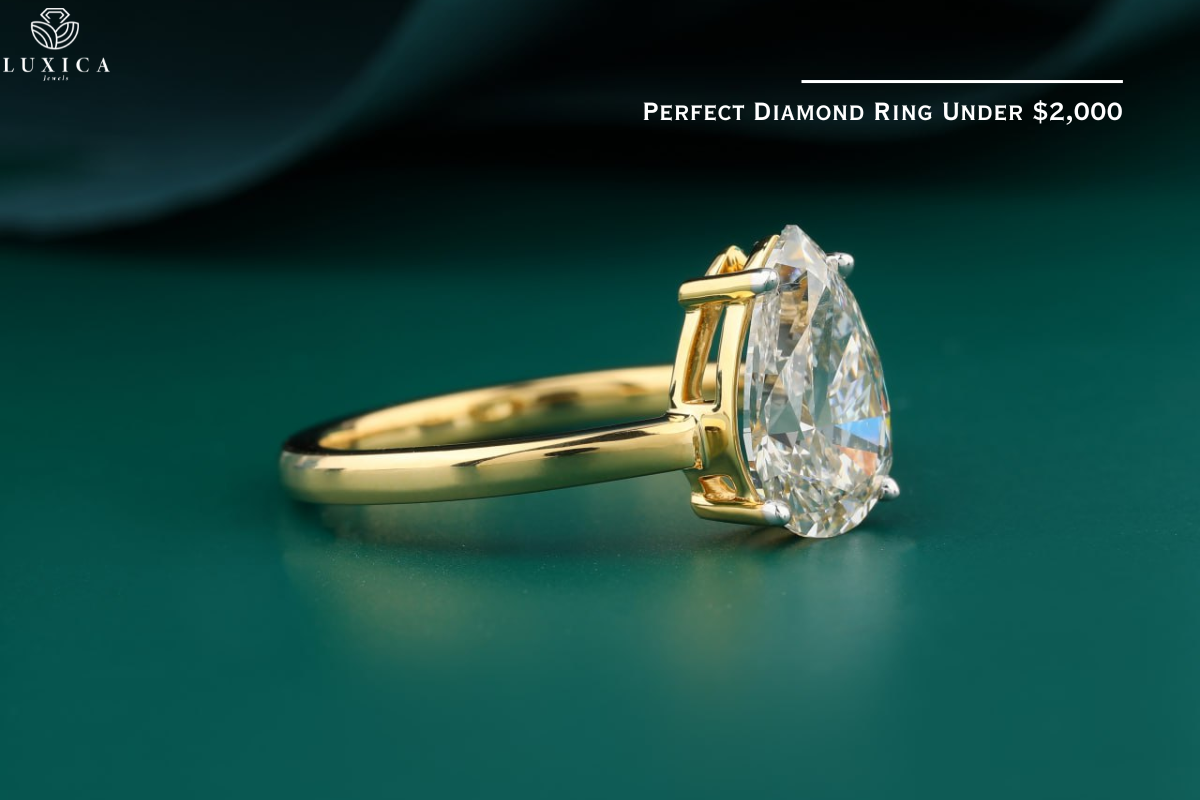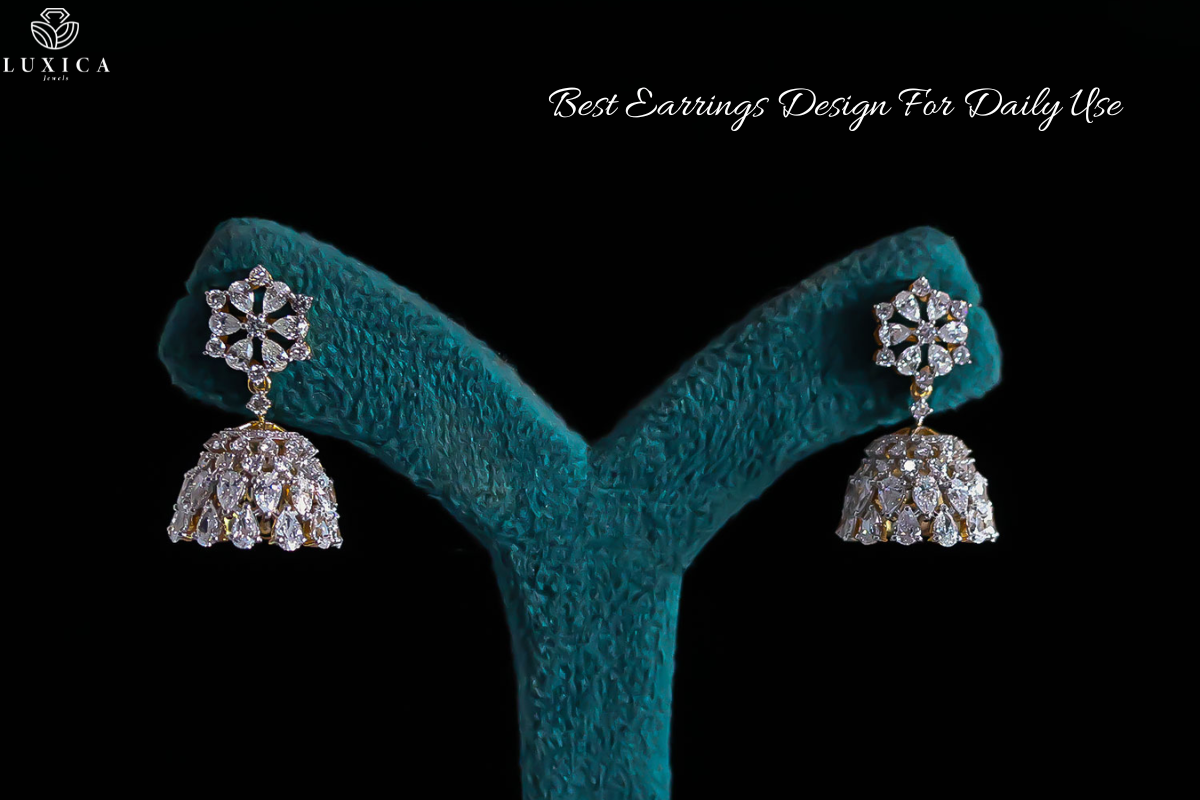Finding the Perfect Diamond Ring Under $2,000

Time is money! Here is where working on your budget will be worthwhile. One could easily think that the challenge would be to find something cheap. Well, the real problem being discussed here is: to find something cheap-looking. But there is an advantage: if you have everything in mind and know what really counts in a diamond, $2,000 will much farther than you imagine.
Understanding Your Priorities
Consider what really matters most before being swept away into a world of carats and clarity grades. Whatever your answer is, will play a part in every decision you make.
The common misconception amongst many shoppers is that they must get the biggest stone they can find. However, that hardly serves their interest. A small diamond that is well-cut with good proportions will win out every time when compared to an overly large one with shoddy workmanship. The key to this understanding is how the famous Four Cs relate to each other and impact both appearance and price.
The Four Cs Strategy for Budget Shopping
Cut Quality: Your Non-Negotiable
And if you remember nothing from this guide, all else is secondary; never compromise on the cut. The cut is how light travels through the diamond, igniting brilliance and fire that make diamonds so alluring. An excellent cut on a 0.75-carat diamond will outshine even a poorly cut one-carat stone, usually at a lesser cost.
The diamonds you should be looking for are those rated by great laboratories such as the IGI or AGS as “Excellent” or “Very Good.” This sole choice will ensure the maximum visual impact of your ring, irrespective of the money present or absent in your purse.
Color: The Sweet Spot
Here is where smart shopping pays off. While colorless diamonds (D-F) command premium prices, the nearly invisible difference lies between one grade and the other. Most people without a trained eye cannot tell them apart without side-by-side comparison.
For the most value, go for the G-I range. These diamonds look white when put into the most settings, especially in conjunction with white gold or platinum, but are far less expensive than their colorless cousins.
Clarity: What the Eye Can’t See
Diamond clarity refers to internal characteristics called inclusions. The industry expects you to believe that flawless diamonds are the must-have, but that is further from truth in reality.
SI1- and SI2-graded diamonds often have inclusions that cannot be seen without magnification. Some I1 diamonds can even be eye clean, meaning that the inclusions do not take away one bit from the stone’s beauty when it is viewed with the naked eye. This opportunity can account for some of the major savings on your budget.
Carat Weight: Strategic Sizing
Carat-weight pricing is considered the most volatile of all other factors; however, prices can be adjusted to favor you. Diamonds just shy of notable weight thresholds such as 0.9 instead of 1.0 carat, or 1.4 instead of 1.5, usually cost 10-20% less-and shall appear practically equal concerning size.
Shape Selection for Maximum Impact
The shape you choose significantly impacts both price and perceived size. Round brilliant diamonds, while the most popular, also carry the highest premium due to demand and the amount of rough diamond lost during cutting.
Consider these alternatives for better value:
Oval diamonds can appear 10-15% larger than rounds of the same carat weight due to their elongated shape. They offer brilliant sparkle with a unique, elegant appearance that photographs beautifully.
Cushion cuts provide excellent value with their vintage appeal and forgiving nature regarding clarity grades. Their larger facets can make inclusions less noticeable while creating beautiful flashes of light.
Princess cuts maximize carat weight efficiency, often appearing larger than rounds while costing 20-30% less. Their square shape suits modern tastes and works well in various setting styles.
Setting Strategies That Enhance and Protect
Your setting choice affects both the ring’s appearance and your diamond’s security. Simple solitaire settings highlight the diamond while keeping costs reasonable, but consider these enhancement techniques:
A halo setting surrounds your center stone with smaller diamonds, creating the illusion of a much larger center diamond. This approach can make a 0.75-carat center stone appear closer to 1.5 carats while staying within budget.
Three-stone settings balance the center diamond with two smaller side stones, distributing visual weight while allowing for a smaller (and more affordable) center stone without sacrificing overall impact.
Shopping Venues: Online vs. Traditional
Online retailers often offer better value than traditional jewelry stores due to lower overhead costs. Reputable online vendors provide detailed photography, video, and certification information that allows for informed decision-making.
However, don’t dismiss local jewelers entirely. Some offer competitive pricing, especially for settings, and the ability to see diamonds in person can be valuable. Many jewelers will also work within your budget to create custom solutions.
Estate jewelry represents another avenue worth exploring. Vintage and pre-owned diamond rings often offer exceptional value, though you’ll want to have any purchase professionally appraised and cleaned.
Certification: Your Quality Assurance
Always insist on diamonds with certification from reputable laboratories. The grading of the GIA is the most recognized and therefore the most consistent. The other certification worthy of trust is issued by the American Gem Society, which also provides very detailed cut grading information.
Stay away from diamonds certified by less well-known labs since their grading standards tend to be inconsistent, sometimes unfavorable to the consumer. A really small fee is nothing compared to the peace of mind and protection of resale value that a certificate can provide.
Where to Shop
Traditional jewelry stores offer personalized service and the ability to examine diamonds in person. Established jewelers often provide comprehensive warranties and sizing services.
Online retailers typically offer better prices due to lower overhead costs. However, ensure they provide detailed diamond grading reports and generous return policies. Luxica Jewels have over 200+ ring designs and also provide customizable ring. We have over 15 + years of experience and team of expert craftsmen.
Estate jewelry stores feature unique vintage pieces with character and history. These rings often cost less than contemporary equivalents while offering distinctive styling.
Timing Your Purchase
Prices of diamonds fluctuate based on seasonal demand. The time of engagement ring applicant application around the holiday period and Valentine’s Day keeps prices sky high. Time off-peak periods-late summer, for instance, or early fall-care forth towards better deals and timely service.
End-of-year sales could bring real savings as inventory gets liquidated, but do not let faux-urgency make you choose a piece that doesn’t quite meet all your criteria.
Final Inspection Checklist
Before making your final decision, evaluate these key points:
Does the diamond exhibit good brilliance and fire when viewed under various lighting conditions? A quality diamond should sparkle in both bright and dim environments.
Is the diamond eye-clean from a normal viewing distance? While inclusions may be visible under magnification, they shouldn’t be apparent during regular wear.
Does the setting securely hold the diamond while complementing its shape and size? Examine prong placement and overall construction quality.
Are you comfortable with the vendor’s return policy and warranty terms? Reputable sellers stand behind their products with reasonable return periods and service guarantees.
Making Your Budget Work Harder
Consider alternative approaches that maximize impact within your price range. A slightly smaller diamond in an expertly crafted setting often appears more impressive than a larger stone in a basic mounting.
Don’t overlook the importance of proper proportions. A well-proportioned diamond of any size will outperform a poorly cut stone regardless of carat weight.
Remember that your ring will be worn daily for decades. Investing in quality craftsmanship and a reputable diamond ensures your purchase will maintain its beauty and value over time.
The Bottom Line
Finding an exceptional diamond ring under $2,000 requires patience, research, and strategic decision-making. Focus on cut quality above all else, be flexible with color and clarity grades that don’t affect visual appearance, and consider shapes and settings that maximize perceived value.
Your perfect ring exists within your budget it’s simply a matter of knowing where to look and what compromises make sense for your priorities. With these strategies in hand, you’re equipped to make a choice that brings joy for years to come while respecting your financial boundaries.



